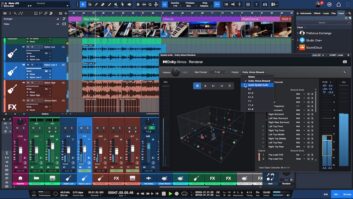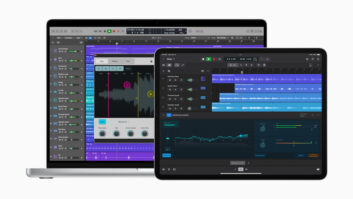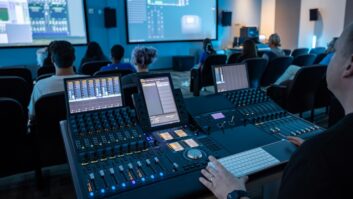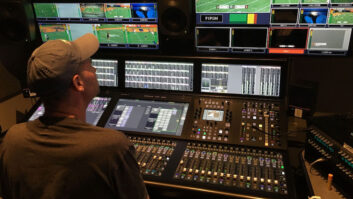
New York, NY (May 28, 2024)—Apple and University of Michigan have announced early findings from the Michigan Public Health Apple Hearing Study, a collaborative analysis of tinnitus information and assessments gathered from more than 160,000 participants.
Tinnitus—a persistent ringing in the ears often caused by exposure to loud sounds—is experienced by millions of people, and the condition has long affected audio professionals. Often seen in the industry as something of an occupational hazard, in extreme cases, it can be a career-ender, making it difficult for those afflicted to properly hear audio that they’re working with. Additionally, it can impact one’s non-working life as well, affecting the ability to sleep, hear others or even concentrate.
The Apple/Michigan study is intended to find the most common characteristics of tinnitus and descriptors for discussing the affliction, with an eye towards aiding future treatment research. In a statement, Rick Neitzel, University of Michigan School of Public Health’s professor of environmental health sciences, noted, “The trends that we’re learning through the Apple Hearing Study about people’s experience with tinnitus can help us better understand the groups most at risk, which can in turn help guide efforts to reduce the impacts associated with it. The Apple Hearing Study gives us an opportunity that was not possible before to improve our understanding of tinnitus across demographics, aiding current scientific knowledge that can ultimately improve management of tinnitus.”
Looking to pinpoint causes of tinnitus, the study found some familiar sources, citing “noise trauma”—exposure to high-decibel sounds—as the most frequent cause, coming in at 20.3 percent. Audio professionals are perhaps more likely to experience noise trauma in the course of their work lives, as well as another cause of tinnitus—stress—which was cited by 7.7 percent of respondents.
Blog: The Downfall & Redemption of the Old RadioShack SPL Meter
The study also looked at tinnitus volumes and length of afflictions. While only 14.7 percent reported constant tinnitus, that number rose as the age groups got older, to the point that 35.8 percent of participants 55 and older experienced it all the time. Also, male respondents experienced tinnitus nearly 6.8 percent more often than females.
While most respondents found tinnitus volume to be relatively faint, at the other end of the spectrum, 10 percent said it moderately or entirely interfered with their ability to hear clearly. A considerable 34.4 percent reported it as noticeable, while 8.8 percent said their tinnitus was very loud or ultra loud.
Out of the more than 160,000 participants, 77.6 percent had experienced tinnitus, and the older the participant, the more likely the person was to experience it daily. Respondents who were 55 or older were three times more likely to have daily tinnitus versus respondents between 18-34 years old.
There are few ways to lessen the impact of tinnitus, but that doesn’t mean those afflicted won’t still try. A full 28 percent of respondents said they use noise machines, while 23.7 percent listen to nature sounds and another 12.2 percent meditate. Using cognitive and behavioral therapy to manage the affliction was a relatively unpopular solution, with less than 2.1 percent exploring that option.
In an effort to more clearly characterize different ways that tinnitus is heard/experienced, the researchers had respondents answer a sound-based test on an iPhone app, asking users to match the type of sound they typically heard for the affliction. Most respondents —78.5 percent—said it was a pure tone, while 17.4 percent reported hearing white noise. For those who heard a pure tone, 90.8 percent reported a pitch at 4 kHz or above, and additionally among them, 83.5 percent said their tinnitus was a single tone while 16.5 percent reported they heard “a teakettle tone”— a high-pitched, whistling sound.
The researchers collected an estimated 400 million hours of “calculated environmental sound levels” in the process of conducting the study, and plan to share data with the WHO.







